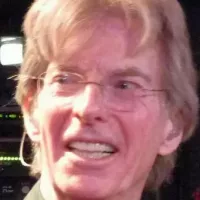The bass guitar, a member of the guitar family, is a plucked string instrument known for its low pitch. It typically has four strings, but variations with more strings exist. Its design shares similarities with electric and acoustic guitars but features a longer neck and scale length. Since the mid-1950s, it has become a popular replacement for the double bass in popular music due to its lighter weight, fretted design, and suitability for electric amplification. The double bass's acoustic limitations in its range, stemming from its scaled-down size, also contributed to the bass guitar's rise in popularity.
1935: First Electric Bass Guitar Prototype
Paul Tutmarc developed the first electric bass guitar in its modern form in 1935. It was a fretted instrument designed to be played horizontally, known as the "Model 736 Bass Fiddle".
October 1951: Fender Precision Bass Debut
The Fender Electric Instrument Manufacturing Company began producing the Precision Bass, or P-Bass, in October 1951, marking a significant milestone in the mass production of electric bass guitars.
1952: Kay Musical Instrument Company Introduces K162
The Kay Musical Instrument Company joined the electric bass market in 1952 with the production of the K162 model.
July 2, 1953: First Recorded Use of Electric Bass (Potentially)
Monk Montgomery, possibly the first to record with the electric bass, did so on July 2, 1953 with the Art Farmer Septet.
1953: Gibson Enters the Bass Market
Gibson launched its first venture into the electric bass market with the release of the EB-1 in 1953, a short-scale violin-shaped electric bass featuring an extendable endpin for versatile playing positions.
1956: Danelectro Longhorn and Höfner 500/1 Debut
The year 1956 saw the release of the Danelectro Longhorn bass guitar, while the Musikmesse Frankfurt trade fair marked the debut of the Höfner 500/1 violin-shaped bass, later gaining fame as the "Beatle bass" due to its association with Paul McCartney.
1957: Bill Black's Switch to Electric Bass
In 1957, influential musician Bill Black, known for his work with Elvis Presley, transitioned from the upright bass to the Fender Precision Bass, contributing to the instrument's rising popularity.
1957: Fender Precision Bass Redesign
In 1957, the Fender Precision Bass underwent a redesign, featuring beveled body edges for comfort and a split coil pickup, aligning its aesthetics closer to the Fender Stratocaster.
1957: Rickenbacker 4000: Pioneering Neck-Through-Body Design
In a groundbreaking move in 1957, Rickenbacker introduced the model 4000, the first bass guitar to feature a neck-through-body design, integrating the neck as part of the body wood.
1958: Gibson Releases EB-2
Gibson introduced the EB-2 in 1958, a hollow-body electric bass with a distinctive maple arched top and a Bass/Baritone pushbutton for tonal variation.
1958: Burns London Supersound Launch
The Burns London Supersound made its entrance into the bass guitar market in 1958.
1959: Introduction of the Gibson EB-0 Bass
In 1959, Gibson released the EB-0 Bass, a more conventional-looking instrument closely resembling the Gibson SG in appearance, further diversifying the company's bass guitar offerings.
1960: Fender Jazz Bass Emerges
Initially known as the "Deluxe Bass," the Fender Jazz Bass, or J-Bass, debuted in 1960, introducing an offset waist body design for enhanced playing comfort and featuring two single-coil pickups.
1961: Fender Introduces Mustang Bass and Fender VI
Catering to a demand for a "Gibson-scale" instrument, Fender released the Mustang Bass in 1961, featuring a 30-inch scale length. The same year, Fender also unveiled the Fender VI, a six-string bass tuned an octave below standard guitar tuning, briefly favored by Jack Bruce of Cream.
1961: Gibson Debuts EB-3
In 1961, Gibson introduced the EB-3, a short-scale bass with a 30.5-inch scale length and a "mini-humbucker" at the bridge position.
1963: Gibson Thunderbird Breaks with Tradition
Breaking from their tradition of shorter scale basses, Gibson released the Thunderbird in 1963, marking their first foray into 34-inch scale-length bass guitars.
1966: Ampeg Introduces First Fretless Bass Guitar
The Ampeg AUB-1, launched in 1966, marked a significant development in the bass guitar world as the first commercially available fretless bass guitar.
1972: Alembic Pioneers "Boutique" Bass Guitars
In 1972, Alembic established a new standard in the bass guitar market by introducing "boutique" or "high-end" electric bass guitars. These custom-made instruments, favored by renowned bassists like Phil Lesh, Jack Casady, and Stanley Clarke, stood out for their unique designs, premium hand-finished wood bodies, innovative construction techniques, and the pioneering use of onboard electronics for pre-amplification and equalization.
1974: Music Man StingRay: First Mass-Produced Active Bass
A significant development in bass guitar technology came in 1974 when Music Man Instruments, founded by Tom Walker, Forrest White, and Leo Fender, introduced the StingRay. Notably, the StingRay became the first widely produced bass to incorporate active (powered) electronics directly into the instrument.
1975: Anthony Jackson Commissions Six-String Bass
Bassist Anthony Jackson commissioned luthier Carl Thompson to build a six-string bass in 1975. This custom-made instrument featured a unique tuning configuration (low to high) of B0, E1, A1, D2, G2, C3, expanding the sonic possibilities of the bass guitar with the addition of a low B string and a high C string.
1976: UK Company Wal Enters Active Bass Production
In 1976, UK-based company Wal joined the ranks of active bass producers, introducing their own line of basses equipped with built-in active electronics.
Mentioned in this timeline

Elvis Presley the King of Rock and Roll was a...

Sir Paul McCartney is an English singer songwriter and musician...

Music is a cultural universal involving the arrangement of sound...

Philip Chapman Lesh is an American musician widely recognized as...
Trending
8 days ago Jalen Williams' Impact: Thunder, Warriors Matchups, Dort's Future, Injury Return
Keldon Johnson is an American professional basketball player currently playing for the San Antonio Spurs in the NBA Prior to...

6 months ago Brokeback Mountain's 20th Anniversary: Challenging Hollywood and impacting audiences, starring Heath Ledger.

6 months ago Sarah Sherman's SNL Checks Mistakenly Sent to Gilda Radner's Estate: A Sobbing Revelation

Lily Allen is an English singer songwriter and actress known for her distinctive voice and candid lyrics She gained prominence...

8 days ago Jesse Plemons discusses 'Bugonia', Oscar buzz, and career from child actor.
Popular

Candace Owens is an American conservative political commentator and author...

Ilhan Omar is an American politician currently serving as the...

XXXTentacion born Jahseh Dwayne Ricardo Onfroy was a controversial yet...

Tom Cotton is an American politician and Army veteran currently...
The Kennedy Center Honors are annual awards recognizing individuals and...

Kelsey Grammer is an accomplished American actor producer and singer...
